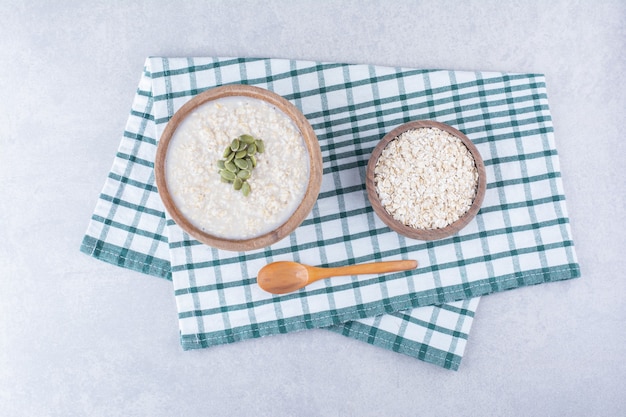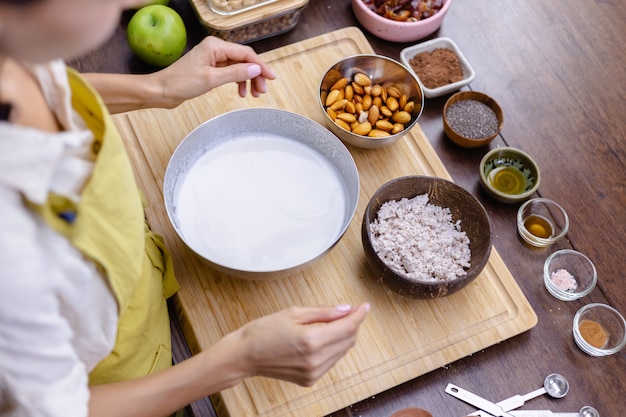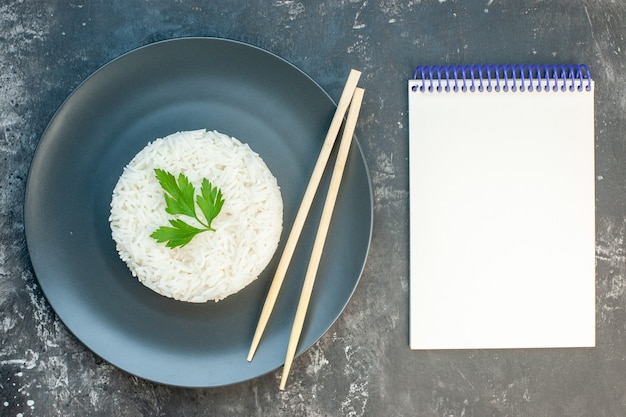I've always loved rice. It's the perfect blank canvas for a multitude of flavours, and it's the foundation of countless delicious dishes. But let's be honest, cooking rice can be a bit of a gamble. You've probably had your fair share of rice disasters – mushy clumps, dry grains, and those dreaded crunchy bits.
Over the years, I've perfected my rice-cooking skills, and I'm here to share my secrets with you! This guide will walk you through the essentials of cooking perfect white rice, covering everything from choosing the right rice to mastering the art of fluffiness. Whether you're a complete novice in the kitchen or just looking to refine your techniques, this guide is for you. Let's get cooking!
(Part 1) Setting the Stage: Choosing Your Rice

The Rice Family: A Quick Guide
The world of rice is vast and diverse, and knowing your options is crucial. We're focusing on white rice here, but even within that category, there are variations that affect cooking time and texture. Here's a quick rundown of the most common types:
- long-grain rice: This is the workhorse of the rice world, known for its fluffy texture and separate grains. It's great for everyday meals and is perfect for stir-fries, curries, and pilafs.
- medium-grain rice: A bit stickier than long-grain, it's ideal for sushi and rice balls. It holds its shape well and has a slightly chewy texture.
- short-grain rice: The most sticky of the bunch, it's perfect for creamy dishes like risotto and rice pudding. It tends to have a slightly sweet flavour.
- jasmine rice: This aromatic rice has a distinct floral scent and a slightly sticky texture. It's best enjoyed with Asian-inspired dishes.
- basmati rice: This long-grained rice is known for its fluffy texture and slightly nutty flavour. It's perfect for Indian and Middle Eastern cuisine.
Choosing the Right Rice for You
For this guide, we'll be using long-grain white rice. It's the most versatile and easy to cook, making it perfect for beginners. However, feel free to experiment with different varieties to discover your favourites!
(Part 2) The Tools of the Trade: Essential Equipment

You don't need a fancy kitchen arsenal to cook great rice. A few essential items will do the trick:
- Saucepan: Choose a saucepan with a lid that fits snugly. This helps to trap steam and create a moist cooking environment for your rice. A 2-3 quart saucepan is ideal for a standard batch of rice.
- Measuring Cups: Accuracy is key when it comes to the perfect rice-to-water ratio. Use a set of measuring cups designed specifically for dry ingredients, like flour or sugar.
- Fine-Mesh Sieve: This is essential for rinsing your rice, removing excess starch and preventing stickiness.
- Fork: A humble fork is all you need for fluffing your cooked rice. It's a simple yet essential step for achieving that light and airy texture.
(Part 3) The Magic Ratio: Rice to Water

The Fundamental Formula
The foundation of perfect rice is getting the ratio of rice to water just right. A general rule of thumb for long-grain white rice is a 1:1.5 ratio – for every 1 cup of rice, use 1.5 cups of water.
Experimenting for Your Preferences
While this is a great starting point, it's always good to experiment. If you like your rice a bit softer, add a little extra water. If you prefer a drier, more fluffy texture, use a touch less water. The key is to find the ratio that suits your personal taste.
(Part 4) The Cooking Process: Step by Step
Step 1: Rinsing the Rice
Rinsing your rice is a crucial step that often gets overlooked. It helps to remove excess starch, which can make your rice sticky and clumpy.
- Place your rice in a fine-mesh sieve.
- Run cold water over the rice until the water runs clear.
- Gently shake the sieve to remove excess water.
Step 2: Boiling the Rice
Now, it's time to get the cooking started:
- Add the rinsed rice to your saucepan.
- Pour the measured amount of water into the saucepan.
- Bring the water to a rolling boil over medium-high heat.
Step 3: Simmering and Steaming
Once the water is boiling, the magic really begins:
- Cover the saucepan with a tight-fitting lid.
- Reduce the heat to a gentle simmer.
- Cook for 15 minutes, or until the water is absorbed and the rice is tender.
Step 4: Resting and Fluffing
This final step is crucial for creating that perfect fluffy rice:
- Remove the saucepan from the heat and let it rest, covered, for 5-10 minutes.
- Fluff the rice gently with a fork to separate the grains.
- Serve immediately and enjoy!
(Part 5) Troubleshooting: Common Rice Issues and Solutions
The Mushy Mess
We've all been there. You open the saucepan, and your rice is a sticky, mushy mess. The culprit? Overcooking.
- Prevention: Keep a close eye on the cooking time and don't overcook your rice.
- Solution: If your rice is already overcooked, fluff it well with a fork and try to absorb some of the excess moisture. You can also sprinkle a little cornstarch on top to help with stickiness.
The Dry and Crumbly Disaster
On the other end of the spectrum, you might end up with dry, crumbly rice. This usually happens if you didn't use enough water or if you let the rice cook for too long.
- Prevention: Use the correct rice-to-water ratio and don't overcook the rice.
- Solution: If your rice is already dry, you can add a bit more water and simmer it for a few more minutes. Be careful not to overcook it!
The Sticky Situation
sticky rice is often caused by insufficient rinsing. The excess starch hasn't been washed away, resulting in a gooey texture.
- Prevention: Rinse your rice thoroughly, until the water runs clear.
- Solution: If your rice is already sticky, try fluffing it well with a fork to separate the grains. You can also sprinkle a little cornstarch on top to help absorb excess moisture.
(Part 6) Elevate Your Rice: Flavour and Variation
Seasoning Your Rice
Plain white rice is a delicious canvas for flavour. Here are a few simple ways to add a touch of magic:
- Salt: A pinch of salt brings out the natural sweetness of the rice.
- Butter: Add a knob of butter for a rich, creamy flavour.
- Herbs: Fresh herbs like parsley, chives, or cilantro add a burst of freshness and colour.
- Garlic: Add a clove or two of minced garlic to the water before boiling for a robust flavour.
- Lemon Juice: A squeeze of lemon juice adds a bright and tangy note.
Beyond the Basics
Don't be afraid to experiment with other seasonings and flavour combinations. You can add ginger, soy sauce, chili flakes, or even a touch of citrus zest. Let your creativity flow!
(Part 7) Beyond the Basics: Creative Rice Dishes
fried rice: A Delicious Leftover Transformation
Fried rice is a classic way to use leftover rice. Simply stir-fry your cooked rice with your favourite vegetables and protein. Add a scrambled egg or a dash of soy sauce for extra flavour.
rice pilaf: Aromatic and Flavorful
A rice pilaf is a fragrant and flavourful dish made with rice, vegetables, herbs, and spices. Common ingredients include onions, carrots, garlic, and herbs like dill or parsley.
Risotto: Creamy Italian Delight
Risotto is a creamy and indulgent Italian rice dish. It requires a bit more time and attention, but it's worth the effort. arborio rice is the key ingredient, known for its ability to absorb lots of liquid and create a creamy texture.
Rice Pudding: Comforting and Sweet
Rice pudding is a classic dessert that's perfect for cold days. It's made with rice, milk, sugar, and often spices like cinnamon and nutmeg. You can even add a touch of vanilla extract for extra flavour.
(Part 8) Storing Rice: Keeping Your Rice Fresh
Storing Cooked Rice
Cooked rice can be stored in the refrigerator for up to 3-4 days. Keep it in an airtight container to prevent it from drying out. Reheat it thoroughly before eating.
Storing Uncooked Rice
Uncooked rice should be stored in a cool, dry place, away from direct sunlight. It can last for several months in a tightly sealed container.
(Part 9) FAQs
1. Why is my rice sticky?
Sticky rice can be caused by a few factors:
- Insufficient rinsing: Not rinsing the rice well enough leaves excess starch, leading to stickiness.
- Using the wrong type of rice: Some rice varieties, like short-grain rice, are naturally stickier than others.
2. Can I use a microwave to cook rice?
While you can cook rice in the microwave, it's not recommended. It often results in unevenly cooked rice, with some parts mushy and others dry.
3. How do I know when my rice is cooked?
When the water is absorbed and the rice is tender, it's ready. Test it by poking a grain with a fork. It should be soft, but not mushy.
4. What are some good side dishes for rice?
Rice pairs beautifully with a wide array of dishes, including:
- Stir-fries: The fluffy texture of rice complements stir-fried vegetables and protein.
- Curries: Rice is a classic accompaniment to spicy curries, absorbing the rich flavours.
- Stews: Rice is a hearty and comforting side for hearty stews and soups.
- Roasted vegetables: The simple flavour of rice contrasts beautifully with roasted vegetables.
5. Can I freeze cooked rice?
While you can freeze cooked rice, it's not ideal. The texture can change slightly, becoming a bit firmer. It's best to freeze rice that's been cooked with minimal seasoning. Thaw it in the refrigerator overnight before reheating.
Now, you have all the knowledge you need to confidently cook perfect white rice every time. Remember, cooking is an adventure! Experiment with different rice varieties, seasonings, and flavour combinations to find what you enjoy. Happy cooking!
Everyone is watching

Corn on the Cob: The Ultimate Guide to Perfectly Cooked Ears
Healthy MealsAh, corn on the cob. Just the name evokes images of sunny days, barbecues, and that sweet, juicy flavour that ...

Perfect Pork Roast Oven Cooking Time: A Guide to Delicious Results
Healthy MealsThere's something truly satisfying about a perfectly roasted pork. The aroma alone is enough to make your mout...

Ham Cooking Time: How Long to Bake, Smoke, or Boil a Delicious Ham
Healthy MealsAh, ham. It's a classic, isn't it? A real crowd-pleaser, especially around holidays. And when done right, it'...

Scallops: The Ultimate Guide to Perfect Cooking
Healthy MealsAh, scallops. Those delicate, sweet, and utterly delicious morsels of the sea. They hold a special place in my...

Spaghetti Squash: The Ultimate Guide to Cooking and Serving
Healthy MealsRemember that time you saw spaghetti squash at the supermarket, looking all bumpy and strange, and thought, "W...
